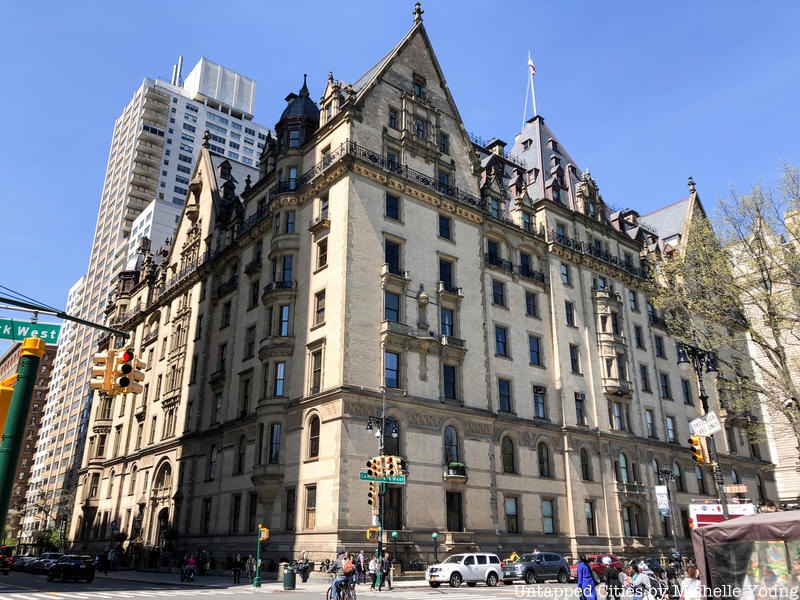9. The Dakota, 1 W 72nd Street

At its inception, The Dakota was one of New York City’s first apartment buildings and it would go on to become one of the city’s most famous. When Singer Sewing Machine Company co-founder and lawyer, Edward Clark, commissioned the Dakota in 1880, the Upper West Side was only in the beginning stages of development, and apartment living still carried the stigma associated with tenement housing. According to the building’s Landmark Designation Report, the Dakota derived its name from its distant location from downtown Manhattan. Friends of Clark would tease that if he built the apartments any further west, they would be in the Dakotas, which at the time was still Native American territory.
In order to coax the elite out of their single-family homes and into his luxury apartments uptown, Clark offered the best amenities. The first step in appealing to renters was to build a beautiful structure. The Dakota was designed by architect Henry Janeway Hardenbergh who would go on to work on the Plaza Hotel and Waldorf-Astoria. Architects find it hard to label Hardenbergh’s design for the Dakota, noting that it incorporates elements of German Renaissance, Chateauesque, and Gothic Revival styles. When the building was completed in 1884, none of the 65 apartments were alike and a single unit could contain as many as 16 rooms. 1 W 72nd quickly became a highly desirable address and continues to be to this day. For all the Dakota’s infamous residents (Yoko Ono and John Lennon, Judy Garland, and Lauren Bacall), there are just as many celebrities who have been famously denied entry (Antonio Banderas, Cher, Billy Joel, and Madonna).





